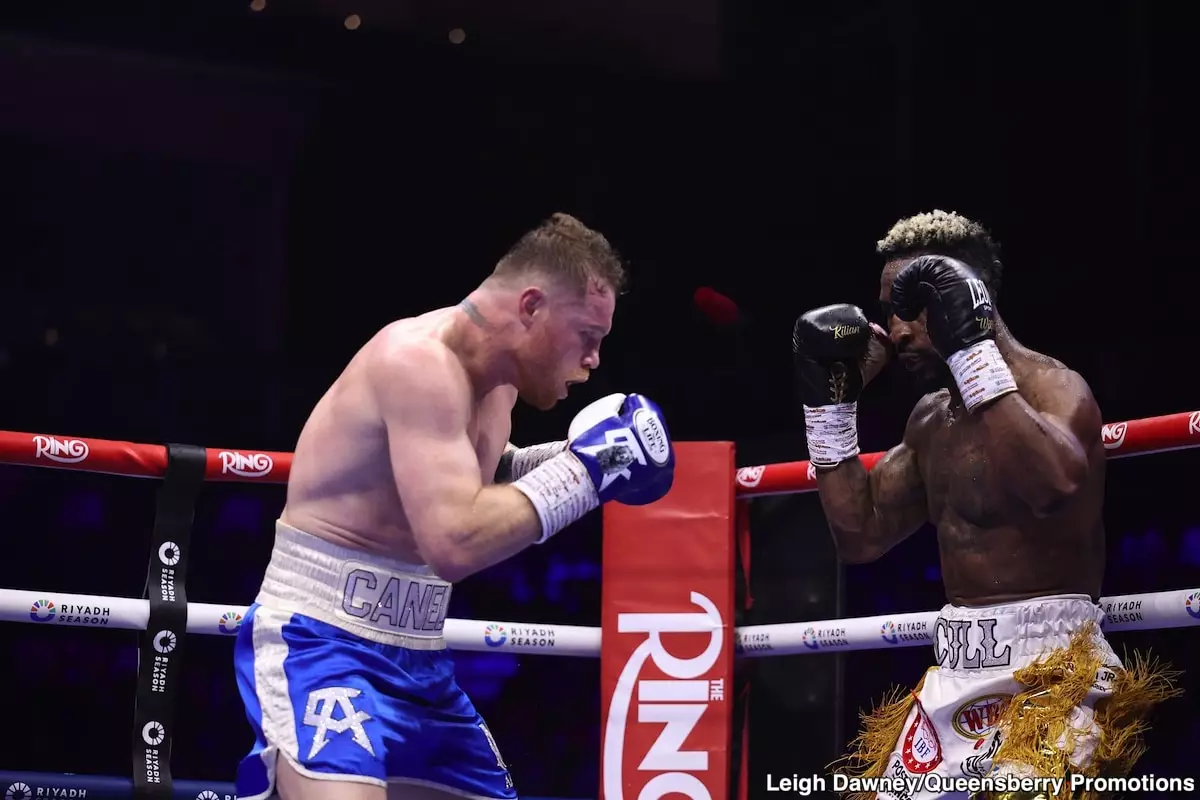In the upcoming clash set for September 13th at Allegiant Stadium in Las Vegas, the boxing world is buzzing with anticipation. However, amid the hype, one crucial factor remains overshadowed: the stark differences in size, strength, and experience between Canelo Alvarez and Terence Crawford. A seasoned trainer like Bob Santos posits that Alvarez’s overwhelming physicality will tip the scales decisively in his favor. This assessment isn’t just superficial bravado; it’s rooted in fundamental boxing principles that highlight how size and power often dictate outcomes in a sport where inches and pounds translate into dominance inside the ring.
Canelo Alvarez, with an impressive record and proven ability to adapt across multiple weight classes, embodies the archetype of a power puncher who maximizes his physical advantages. His size isn’t incidental; it’s a strategic asset that he has refined over years at 168 pounds. Conversely, Crawford’s decision to leap up three divisions without an adequate tune-up appears to be a reckless gamble rather than a calculated challenge. His recent outings at 154 pounds, while commendable, seem insufficient preparation for the weight and power disparity he now faces. Physical superiority in boxing often correlates with durability and punch resistance, and Alvarez’s consistent strength at 168 pounds signals that Crawford might be overestimating his agility and skill to neutralize raw force.
Age and Ring Wear: The Toll on Crawford’s Conference
Physical condition and age are pivotal in determining a fighter’s capacity to endure and adapt in the grueling environment of a high-stakes bout. Crawford, who will be nearly 38 years old at the time of the fight, appears to be visibly aged even before entering the ring. Reports from his training camp suggest a man who looks older and less sprightly, raising questions about whether he’s still in the prime of his powers.
The significance of this age factor cannot be overstated. Boxing is an unforgiving sport, where agility, reflexes, and stamina are crucial. When a fighter exhibits signs of aging, especially during intense training, it signals a potential decline that even skill and experience might not fully compensate for. Crawford’s last fight, a narrow decision over Israil Madrimov, did little to dispel concerns about his current form. He won that bout — but narrowly and with evident signs of struggle, which suggests that he may be approaching the tail end of his prime just as he attempts to take on a larger, more powerful opponent.
Such physical and mental wear could make Crawford less resilient to Canelo’s powerful assaults, especially considering his lack of recent activity at 168 pounds. Moving up a division isn’t just about weight; it involves adjusting to a different pace, power, and physicality — none of which appear to be in Crawford’s favor based on his recent form.
The Strategy and Mindset: Canelo’s Calculated Risk-Taking
Canelo Alvarez’s history underscores his intelligence and adaptability in the ring. He’s demonstrated a capacity to conserve energy against lesser opponents and unleash calculated power when it truly matters. Santos emphasizes that Canelo’s experience has taught him when to go all-in and when to hold back, a strategic finesse that could prove decisive against a somewhat compromised Crawford.
Moreover, the financial stakes involved are extraordinary. Reports suggest Alvarez is set to receive a hefty $100 million payday from Turki Alalshikh. Such a lucrative deal naturally amplifies Alvarez’s motivation — he’s not just fighting for legacy or titles but also to satisfy the enormous financial expectations that come with being one of the sport’s highest-paid fighters. This immense pressure to perform, coupled with the knowledge that he’s up against a smaller, aging opponent, will likely push Alvarez to be more aggressive, daring to take risks that could lead to a spectacular knockout or a commanding points victory.
From a strategic perspective, Alvarez understands that a dominant performance isn’t just about showcasing his power but also about cementing his position among the sport’s elite. His proven ability to conserve energy in previous fights suggests he will be patient, picking his moments to strike and exploiting Crawford’s perceived vulnerabilities.
The Realist’s Perspective on the Upcoming Fight
In essence, the fight hinges on the idea that physical advantages and tactical discipline often outweigh pure boxing skill when the gap is this wide. Crawford, despite his impressive record and technical prowess, enters this bout with significant handicaps: a long layoff, a challenging weight jump, signs of aging, and an opponent whose size and power are starkly superior.
While no fighter should be underestimated—Crawford’s talent and resilience remain formidable—the reality is that Alvarez’s strength and experience at 168 pounds could be insurmountable barriers. The dimension of size isn’t merely a superficial factor; it is a determinant that, if exploited effectively, can dictate the tempo and outcome of a fight. For Crawford to triumph, he would need to showcase extraordinary skill, resilience, and perhaps a touch of luck, all while overcoming the intangible weight of physical disadvantages.
In a boxing universe where size and strength often decide fates, Canelo Alvarez’s physical prowess may well prove to be the ultimate difference-maker in this intriguing showdown.

